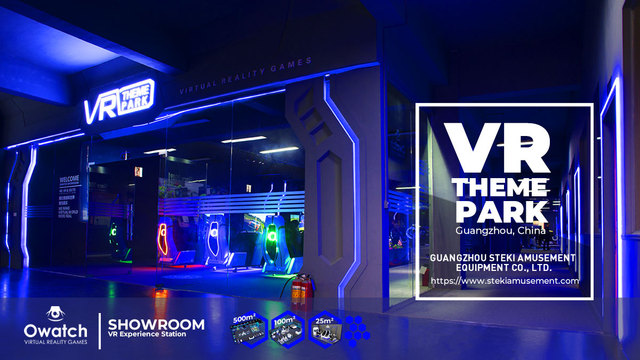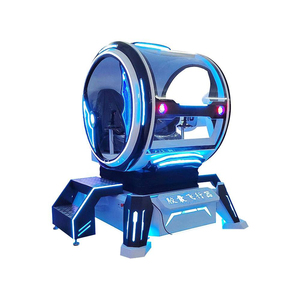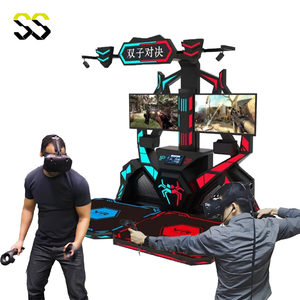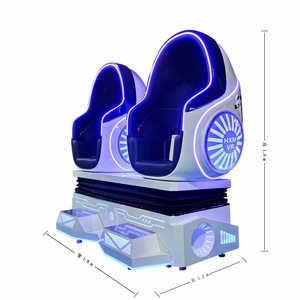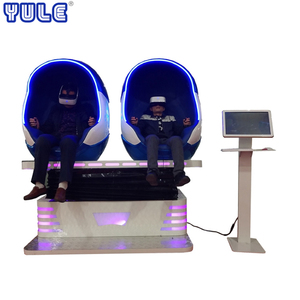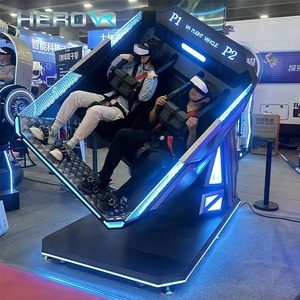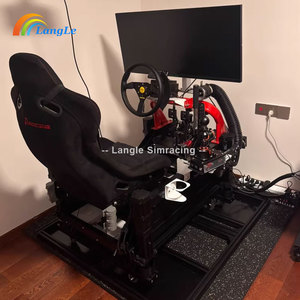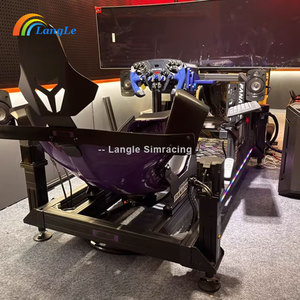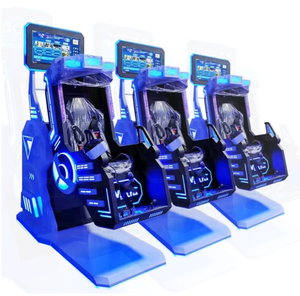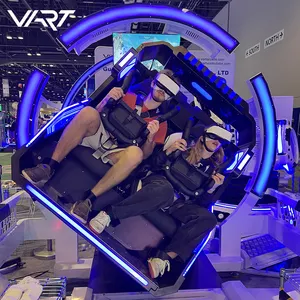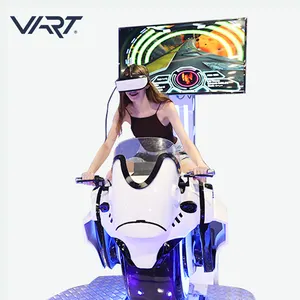Virtual Reality Simulator
 Top sponsor listing
Top sponsor listing





 1/3
1/3



 0
0




 1/27
1/27



 0
0




 1/2
1/2







 1/8
1/8


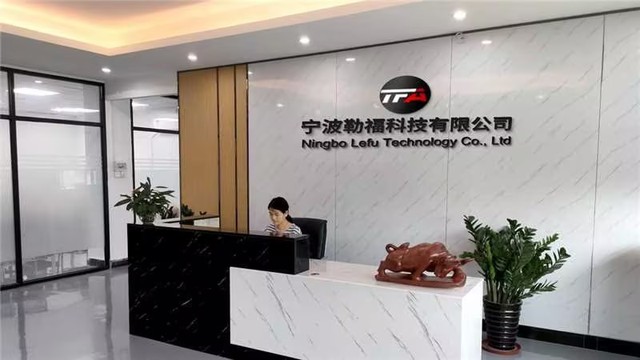

 1/3
1/3



 0
0







 1/24
1/24







 1/8
1/8



 0
0









 1/3
1/3





 1/3
1/3





 1/3
1/3



 0
0








 1/14
1/14



 1/1
1/1



 0
0
About virtual reality simulator
Where to Find Virtual Reality Simulator Suppliers?
Guangzhou, China has emerged as a central hub for virtual reality (VR) simulator manufacturing, hosting a concentrated cluster of specialized suppliers with vertically integrated production capabilities. The region benefits from a mature ecosystem of electronics, motion mechanics, and immersive software development, enabling rapid prototyping and scalable output. Most leading manufacturers operate within industrial zones that support end-to-end assembly—from structural welding and electrical integration to VR content rendering and system calibration.
These suppliers typically focus on commercial-grade VR simulators designed for amusement parks, arcades, and experiential venues. Production facilities average 2,000–5,000m², with monthly outputs ranging from 50 to 200 units depending on model complexity. Key technical differentiators include multi-axis motion platforms, haptic feedback systems, and 9D VR environments incorporating wind, vibration, and scent effects. Integration with coin-operated mechanisms and networked multiplayer functionality is standard across mid-to-high-end models.
How to Choose Virtual Reality Simulator Suppliers?
Procurement decisions should be guided by verified operational metrics and technical capabilities:
Performance & Reliability Metrics
Prioritize suppliers with documented on-time delivery rates exceeding 90% and reorder rates above 30%, indicating consistent product quality and service reliability. Response times under 2 hours are common among high-service providers and reflect strong customer support infrastructure.
Technical & Manufacturing Verification
Assess core production competencies through the following criteria:
- Proven experience in VR/AR/MR equipment manufacturing (minimum 50+ active listings or equivalent portfolio)
- In-house engineering teams capable of customizing motion dynamics, cabin configurations, and software interfaces
- Integration of safety-rated control systems and CE-compliant electrical components for international deployment
- Capacity for full-motion simulation systems, including hydraulic/pneumatic actuation or electric servo-driven platforms
Cross-reference supplier claims with transactional data such as online revenue (e.g., $100,000+ annual digital sales indicate scale) and product listing diversity to assess market validation.
Customization and Transaction Security
Confirm customization options including color schemes, branding (logo, packaging), and structural modifications (single/double/multi-seat layouts). For risk mitigation, utilize secure payment frameworks and require pre-shipment inspection protocols. Sample testing is critical—verify motion synchronization, VR latency (<20ms), and durability under continuous operation before bulk ordering.
What Are the Best Virtual Reality Simulator Suppliers?
| Company Name | Main Products (Listings) | Online Revenue | On-Time Delivery | Reorder Rate | Response Time | Customization Options | Notable Product Range |
|---|---|---|---|---|---|---|---|
| Guangzhou Steki Amusement Equipment Co., Ltd. | VR/AR/MR Equipment (342) | US $110,000+ | 100% | 33% | ≤2h | Not specified | Multi-user VR theaters, motion simulators |
| Northern Lights (Guangzhou) Digital Technology Co., Ltd. | VR/AR/MR Equipment (552) | US $350,000+ | 91% | 29% | ≤2h | Not specified | VR shooting simulators, fitness bikes, arcade machines |
| Guangzhou Golden Hand Amusement Co., Ltd. | VR/AR/MR Equipment (63) | Data Unavailable | No Data | No Data | ≤3h | Not specified | 9D VR flight, roller coaster, and dynamic motion simulators |
| Guangzhou Sile Zhihui Technology Co., Ltd. | VR/AR/MR Equipment (data not listed) | US $20,000+ | 62% | 50% | ≤1h | Color, material, size, logo, packaging, graphics | Multiplayer shooting, driving, and interstellar VR experiences |
| Truman Shijie (Guangzhou) Amusement Technology Co., Ltd. | VR/AR/MR Equipment (292) | US $20,000+ | 100% | 100% | ≤4h | Not specified | VR motorcycle, racing, and future warrior combat systems |
Performance Analysis
Northern Lights leads in product breadth and digital revenue, suggesting strong R&D investment and market reach. Guangzhou Steki and Truman Shijie demonstrate exceptional reliability with 100% on-time delivery, making them suitable for time-sensitive deployments. Truman Shijie also stands out with a 100% reorder rate, indicating high client retention and satisfaction. Guangzhou Sile Zhihui offers extensive customization despite lower transaction volume, positioning it as a preferred partner for branded or niche applications. Buyers seeking proven scalability should prioritize suppliers with over 300 VR equipment listings and verifiable revenue streams.
FAQs
How to verify virtual reality simulator supplier reliability?
Validate compliance with international standards such as CE for electrical safety and machinery directives. Request evidence of functional testing, including motion system endurance and VR synchronization reports. Analyze historical transaction data, customer reviews, and response consistency to assess operational stability.
What is the typical lead time for VR simulators?
Standard models require 20–30 days for production and testing. Custom configurations involving motion platform redesign or proprietary software integration may extend lead times to 45–60 days. Air freight adds 5–7 days; sea freight takes 25–40 days depending on destination.
Can suppliers provide customized VR content?
Many manufacturers offer basic content libraries (e.g., space flight, zombie shooting, roller coasters). Advanced customization—such as branded narratives or location-specific themes—requires direct collaboration with the supplier’s software team and may incur additional licensing or development fees.
What are common MOQ and pricing structures?
Minimum order quantities are typically 1 set for standard models. Unit prices range from $580 for compact single-station units to over $14,000 for multi-seat, full-motion installations. Volume discounts apply at 5+ units, with FOB Guangzhou pricing standard.
How to evaluate after-sales support?
Confirm availability of technical documentation, remote troubleshooting, and on-site service provisions. Leading suppliers provide English-language manuals, video tutorials, and firmware updates. Inquire about spare parts inventory and warranty terms (typically 12 months for hardware, 6 months for wearables).





















